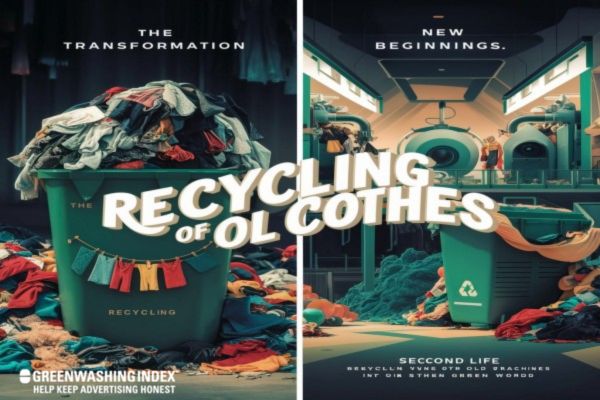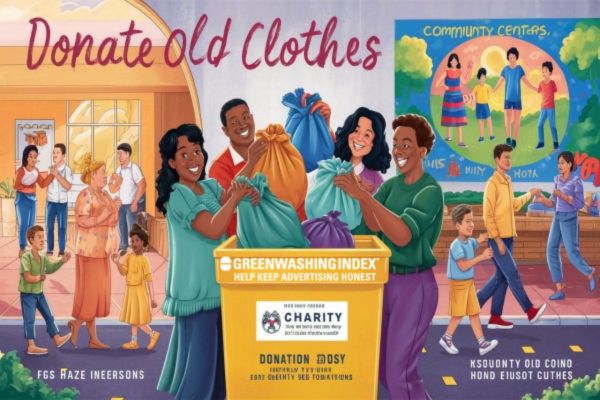

We’ve all got that pile of old clothes we can’t bear to throw away, but what to do with old clothes? Instead of letting them collect dust, let’s explore some clever and practical ways to give them a second life. From upcycling into stylish tote bags to crafting memory-filled quilts, the possibilities are endless.
Not only will we reduce waste, but we’ll also add a personal touch to our homes and lives. Ready to turn those forgotten garments into something amazing? Let’s dive into some genius ideas you’ll definitely want to try!
Let’s get creative with our old clothes by transforming them into something new and useful. We can upcycle fabric scraps into DIY projects like tote bags, pillow covers, or even quirky patchwork quilts. These projects not only reduce waste but also add a personal touch to our homes.
Repurposing old clothes through DIY projects not only breathes new life into worn fabrics but also fosters creativity and sustainability. We can take those beloved but worn-out pieces and transform them into something useful and stylish. It’s a wonderful way to reduce waste and exercise our crafty side.
One of our favorite DIY projects is turning old t-shirts into reusable shopping bags. With just a few snips and stitches, we can create eco-friendly alternatives to plastic bags.
Another idea is making cozy quilts from old fabric scraps. Not only do they keep us warm, but they also preserve memories associated with the original clothes. And let’s not forget about creating decorative pillow covers. They add a personal touch to our home decor and are simple to sew.
These projects are just a starting point. By embracing DIY, we can turn our old clothes into practical, beautiful items, all while contributing to a more sustainable lifestyle.
Create lasting memories: Crafting quilts from old clothes preserves treasured moments.
Add personal touches: Decorative pillow covers give our spaces a unique flair.
Save the environment: Reusable shopping bags help reduce plastic waste.
Breathing new life into old clothes through upcycling not only sparks creativity but also makes a substantial contribution to environmental sustainability. When we upcycle, we transform worn or outdated garments into fresh, unique pieces. This can involve sewing, cutting, or combining different fabrics to create something entirely new. Imagine turning an old pair of jeans into a trendy tote bag or transforming a worn-out t-shirt into a fun pillow cover!
By upcycling, we give our clothes a second chance and reduce the waste that ends up in landfills. It’s a win-win situation that allows us to express our individuality while being eco-friendly.
Here are some emotional benefits of upcycling:
Let’s embrace upcycling as a practical and enjoyable way to manage our old clothes. It’s not just about saving fabric; it’s about reimagining possibilities and fostering a more sustainable lifestyle.
Also Read: TV Recycling: Your Ultimate Guide to Eco-Friendly Disposal
Recycling old clothes is a practical way to reduce waste and give new life to worn-out items. We can utilize fabric recycling programs available at local textile banks or inquire with our council about textile collections.

When old clothes are too worn to wear, fabric recycling programs offer a sustainable solution to keep textiles out of landfills. These programs are designed to take our damaged or unwearable clothing and repurpose the materials into something new. By participating in fabric recycling, we reduce waste and contribute to a more sustainable fashion industry.
Many local councils provide textile recycling bins where we can drop off our old clothes. Some retailers also have in-store collection points for fabric recycling. Brands like H&M and Levi’s often offer discounts in exchange for bringing in old garments. It’s an easy way to recycle while saving money on future purchases.
Animal shelters are another great option. They can use old textiles for cleaning, bedding, and comfort for the animals. This not only helps us recycle but also supports a good cause.
Additionally, there are specialized recycling companies that turn worn-out clothes into new products like insulation, carpet padding, or industrial rags. By choosing fabric recycling programs, we take a small but significant step toward reducing our environmental footprint. Let’s make the most of these opportunities to recycle and repurpose our old clothes.
Composting old clothes made from natural fibers is a fantastic way to keep them out of landfills and return their nutrients to the earth. When we compost items like cotton, linen, wool, or silk, we’re basically recycling them back into the soil, enriching it naturally.
To start, we need to make sure the clothes are 100% natural fibers, as synthetic blends won’t break down properly. First, we should cut the fabric into smaller pieces to help speed up the decomposition process. Adding these fabric scraps to our compost pile is easy—mix them in with our kitchen scraps, yard waste, and other compostable materials.
It’s important to balance the carbon-rich fabric with nitrogen-rich materials, like vegetable scraps or coffee grounds, for an effective composting process. We should avoid composting clothes treated with heavy dyes or chemicals, as these can harm the soil. Instead, focus on untreated or naturally dyed fabrics.
Over time, the natural fibers will break down, leaving us with rich, fertile compost to use in our gardens. By doing this, we’re not only reducing waste but also giving back to the environment in a meaningful way.
Also Read: Compost Mold Dilemma: Is It Worrisome or Worthwhile?
When it comes to selling our old clothes, we’ve several options that can help us make some money and clear out space. Online platforms and consignment stores where they’ll be sold on our behalf, making the process even easier.
Selling old clothes online is a straightforward way to give them a new life while making some extra cash. We can utilize various online platforms that make the process easy and efficient. Websites like Depop, eBay, and Vinted are popular choices, allowing us to reach a wide audience and potentially sell items quickly.
On Depop, we can create a virtual store, upload photos of our clothes, and set prices that reflect their condition and brand value. eBay offers auction-style listings or fixed-price sales, giving us flexibility in how we want to sell. Vinted, on the other hand, focuses solely on fashion, making it easier to connect with buyers specifically looking for clothing items.
When selling online, it’s important to present our clothes in the best light. Clear photos, accurate descriptions, and honest disclosures about any wear or damage can help build trust with potential buyers.
Additionally, consider the following emotional benefits of selling old clothes online:
Consignment stores offer a convenient way for us to sell old clothes while ensuring they find a new home. These stores work by accepting our gently worn items and selling them on our behalf. We get a portion of the sale price, which makes it a win-win situation. It’s a fantastic way to clear out our closets without wasting perfectly good clothing.
To get started, we need to gather clothes that are still in good condition. Consignment stores often prefer brand-name items or pieces that are in style. Once we’ve selected our items, we can either drop them off at a local consignment shop or send them to an online consignment store. Some popular online options include ThredUp and The RealReal.
When our clothes sell, the store takes a commission. This percentage can vary, so it’s a good idea to check the terms of each store. Selling through consignment stores not only puts some cash back in our pockets but also promotes sustainability by extending the life of our clothes.
Let’s consider donating our old clothes to local charities and clothing drives. Many organizations and community groups welcome gently used items to support those in need.

When our closets overflow with clothes we no longer wear, donating them to local charities can make a significant difference in our communities. Giving our gently used clothes to organizations that support those in need not only aids individuals but also promotes a sustainable lifestyle.
Local charities often rely on these donations to provide affordable clothing options to people facing financial hardships. By contributing, we guarantee that our clothes have a second life, reducing waste and supporting those who may not have the means to buy new items.
Many local charities, such as homeless shelters, women’s shelters, and community centers, welcome donations of clothing. These organizations often distribute clothes directly to individuals or sell them in thrift stores to fund their programs. It’s a simple act that can have a profound impact on someone’s life.
Consider the emotions behind these scenarios:
Donating clothes can be a small gesture with far-reaching effects, fostering a sense of community and care.
Joining community clothing drives is another impactful way to donate old clothes and support those in need. When we participate in these drives, we directly contribute to helping individuals and families who might be struggling to afford essential clothing. Many local organizations and schools host these drives regularly, making it easy for us to get involved.
Clothing drives often accept a wide range of items, from everyday wear to seasonal garments like coats and scarves. By donating, we guarantee that clothes in good condition find new homes rather than ending up in landfills. This simple act can make a significant difference, especially during colder months when warm clothing is in high demand.
We should always check the guidelines of the specific drive we’re contributing to. Some might’ve restrictions or specific needs, such as children’s clothing or professional attire. It’s also important to wash and fold our donations neatly. Clean clothes are more likely to be welcomed and used by recipients.
Also Read: How To Recycle Smartphones: A Guide To Green Tech Habits
Let’s consider swapping old clothes as a sustainable option. We can organize clothing swaps with family, friends, or flatmates, where everyone brings items they no longer wear.
Additionally, online platforms like MyWardrobeHQ and ByRotation allow us to rent clothes, making it easy to refresh our wardrobes without buying new items.
Swapping old clothes with family, friends, or flatmates is a fun and eco-friendly way to update your wardrobe without spending a dime. We can organize a small gathering where everyone brings items they no longer wear. It’s a great opportunity to socialize and discover new pieces that might suit us better. This not only helps us declutter our closets but also reduces waste by giving clothes a second life.
We can make it even more exciting by setting up a themed swap, like casual wear or party outfits. This way, we can anticipate and bring relevant items. Another idea is to have a try-on session, so we can see how different pieces look before making a swap. It’s like shopping with friends, but it’s completely free!
If there are clothes left over after the swap, we can collectively decide to donate them to a local charity. This ensures that nothing goes to waste and supports a good cause. By swapping clothes, we’re not only updating our wardrobes but also promoting a sustainable lifestyle. It’s a win-win for us and the environment.
Exploring online swap platforms allows us to refresh our wardrobes conveniently from home while promoting sustainability. These platforms let us exchange gently used clothes with others, giving our old garments a new life and keeping them out of landfills.
Online swaps are straightforward to join and operate. We can start by listing items we no longer wear on websites designed for swapping. People interested in our offerings will reach out, and, in return, we can browse through their collections for pieces that catch our eye. Platforms like Swap.com and Rehash Clothes are great places to begin.
Participating in online swaps has several advantages:
We’ve explored many ways to give old clothes new life. From upcycling into tote bags and quilts to recycling, composting, selling, donating, or swapping, there are numerous options.
Each method contributes to sustainability and creativity in our lives. Let’s embrace these ideas, reducing waste and adding personal touches to our homes.
Whether it’s preserving memories or creating something practical, repurposing old clothes is a step toward a more sustainable future.
